Related Research Articles
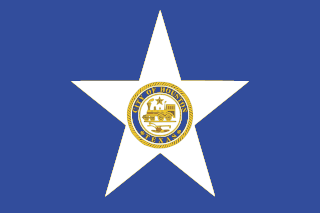
The city of Houston in the U.S. state of Texas was founded in 1837 after Augustus and John Allen had acquired land to establish a new town at the junction of Buffalo and White Oak bayous in 1836. Houston served as the temporary capital of the Republic of Texas. Meanwhile, the town developed as a regional transportation and commercial hub. Houston was part of an independent nation until 1846 when the United States formally annexed Texas. Railroad development began in the late 1850s but ceased during the American Civil War. Houston served the Confederacy as a regional military logistics center. The population increased during the war and blockade runners used the town as a center for their operations.
Harrisburg is a community that is now located within the city of Houston, Texas, United States.
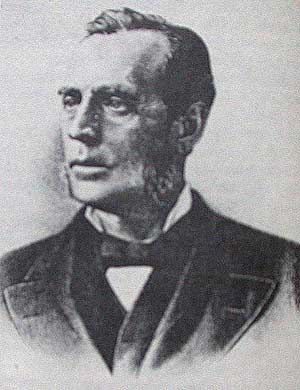
William Austin Hamilton Loveland was a U.S. railroad entrepreneur and businessman in the late 19th century. An early resident of Golden when it was the capital of the Colorado Territory, he was one of the founders of the Colorado Central Railroad and a principal figure in the early history of Colorado. As president of the Colorado Central, he was instrumental in the expansion of the railroad network into the mining communities of Colorado. For much of the 1870s Loveland waged a fierce struggle with Union Pacific investors for control of the Colorado Central. He also served as Lieutenant Governor of Colorado.
The Allen Ranch, or Sam Allen Ranch, was one of the first and longest running ranches in the history of the state of Texas in the United States. The ranch was started a few years after the Texas Revolution in what is now southeast Houston and Pasadena. The ranch itself extended from Clear Lake to Harrisburg. The cattle range covered much of southeast Harris County and Galveston County covering many of the modern communities around Galveston Bay.
The Buffalo Bayou, Brazos, and Colorado Railway, also called the Harrisburg Road or Harrisburg Railroad, was the first operating railroad in Texas. It completed its first segment of track between Harrisburg, Texas and Stafford's Point, Texas in 1853. The company established a western terminus at Alleyton, Texas prior to the Civil War. The railroad was sold after the war and reincorporated as the Galveston, Harrisburg, & San Antonio Railroad. This right of way was acquired by the Southern Pacific Railroad and is today a property of the Union Pacific Railroad.

Sidney Sherman was a Texian general and a key leader in the Texas Army during the Texas Revolution and afterwards.
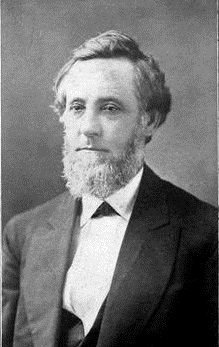
William Robinson Baker was an American railroad executive and politician who served as the 29th Mayor of Houston from 1880 to 1886. Baker was previously the Director and Vice President of the Houston and Texas Central Railroad and represented the 14th district in the Texas Senate for one term, from 1874 to 1876.
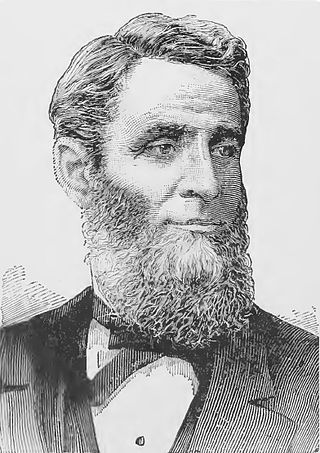
Robert Harris was a civil engineer and railroad executive who became president of the Chicago, Burlington and Quincy Railroad and Northern Pacific Railway.

Swante M. Swenson was the founder of the SMS ranches in West Texas. It was through his efforts that Swedish immigration to Texas was begun in 1848. In 1972, he was inducted into the Hall of Great Westerners of the National Cowboy & Western Heritage Museum.
The SMS Ranches are a famous group of cattle ranches located in West Texas.
Thomas William House Sr. was a merchant and cotton factor in Houston, Texas. He also invested in and organized transportation and utility companies in the Houston area. He was a veteran of the Texas Revolution and provided financial assistance to the Confederacy during the American Civil War. He was mayor of Houston, Texas in 1862.
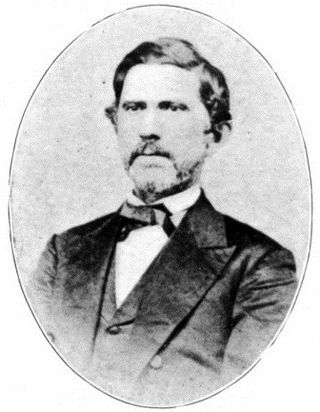
Not to be confused with William J. Hutchins who served as president of Berea College
The Houston Tap and Brazoria Railway was chartered in September 1856 to extend southward from Houston to West Columbia in Brazoria County. The railroad's nicknames were the Columbia Tap and the Sugar Road. The railway absorbed track from an earlier short-lived line and reached West Columbia in 1860. After the American Civil War, the railroad ran into serious financial difficulties and was sold to the Houston and Great Northern Railroad. It was the only railroad that failed to repay money borrowed from the Special School Fund and the only railroad that could trace its title to the State of Texas. The line operated as part of the Missouri Pacific Railroad until 1980 when it was bought by the Union Pacific Railroad. In 2014, the part of the line closest to downtown Houston existed only as the Columbia Tap Rail-Trail, the portion of the line between Houston and Arcola was still in service and the section between Arcola and West Columbia was abandoned.
Thomas Howe Scanlan was a mayor of Houston, Texas. He supported the Union during Reconstruction, and was installed as an alderman and mayor during that period. As well as investing in real estate, he owned stakes in local companies, including rail transportation and utilities.
Houston Direct Navigation Company operated ships on Buffalo Bayou between 1866 and 1927. It had had two antecedent companies with similar subscriber lists and management: the Houston and Galveston Navigation Company, and the Houston Navigation Company.

Paul Bremond was an American businessman. He was a hatter, doing business in New York City and Philadelphia, and from 1840, a commission merchant in Galveston, in the Republic of Texas.

Charles Grafton Bigelow was a businessman who served a single one-year term as the fourth mayor of Houston, Texas, from January 6, 1840, to January 15, 1841, before serving as a colonel in the Mexican-American War.
Horace Dickinson Taylor was a commission merchant and a mayor of Houston, Texas.
John Day Andrews was a tavern keeper, carpenter, merchant, planter, and politician. He worked in Virginia as a plantation overseer and owned a tavern. He relocated to Houston around 1838, where he worked as a carpenter, a dry goods merchant, and a planter. He served as an Alderman and a mayor of Houston.

Nathan Fuller was a mayor of Houston and a businessman.
References
- ↑ Benham, Priscilla Myers (July 1, 2017). "James H. Stevens". Handbook of Texas Online. Retrieved February 12, 2024.
- 1 2 3 4 Benham, Priscilla (1998). "Houston Mayor: Developing A City". East Texas Historical Journal. 36 (1): 67.
- ↑ Platt, Harold L. (1983). City Building in the New South: The Growth of Public Services in Houston, Texas, 1830–1910. Philadelphia: Temple University Press. p. 17. ISBN 0-87722-281-9.